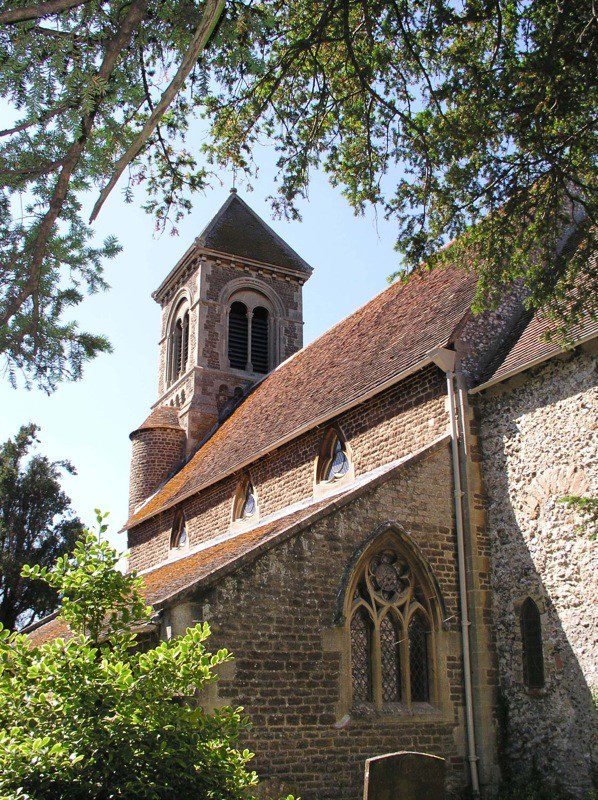St. Leonard’s was destroyed by the Danes in 1066 AD and rebuilt after the Norman Conquest. During the siege of Wallingford in 1646, the church was used as a barracks for Cromwell’s army and was left as a ruin with the apse and south aisle completely destroyed. Only parts of the chancel and the north wall remain of the original building. Outside the church, herringbone flint work, characteristic of the Saxon period, can be seen on the north side; and two of the original windows are traceable outside the south wall of the chancel, as is the framework of a doorway, which may be of Saxon origin. Repairs were carried out in 1656, 1695 and 1700. A small wooden bell turret was built at the west end; the single bell is inscribed “Thos. Swaine fecit 1781”.
The present apse was built in 1850 on the foundation of the old one, parts of which can be seen below the walls. A new south aisle was also built, and the series of arches of Norman design replaced the ancient piers. The present west tower was also built at this time. The font also dates from 1850.
The arches of the apse and of the chancel show diaper work upon the jambs and interlacing patterns and other ornaments of a very early style on the capitals and bases. The north door and some of the nave windows are of the Norman period; but Early English lancets have been inserted in both nave and chancel.
On the western pillar of the nave are mouldings of the symbols of the four Gospel evangelists – a lion, an eagle, an ox and a man. These are copied from similar carvings on the tower.
The angel paintings on the east wall are by G.D. Leslie, R.A. (1835-1921.
